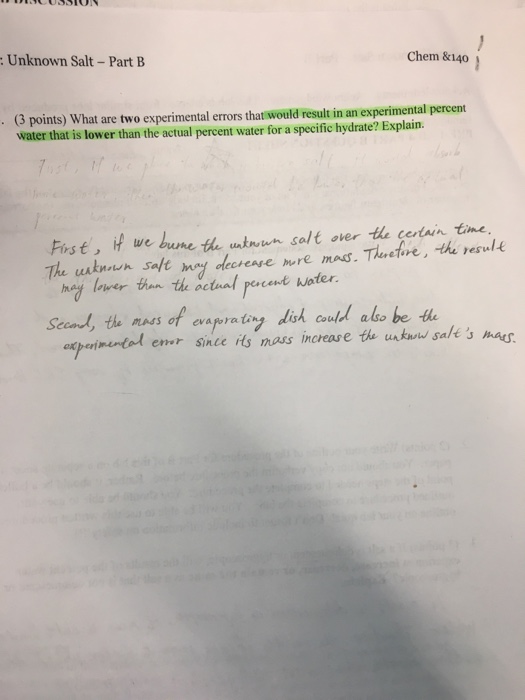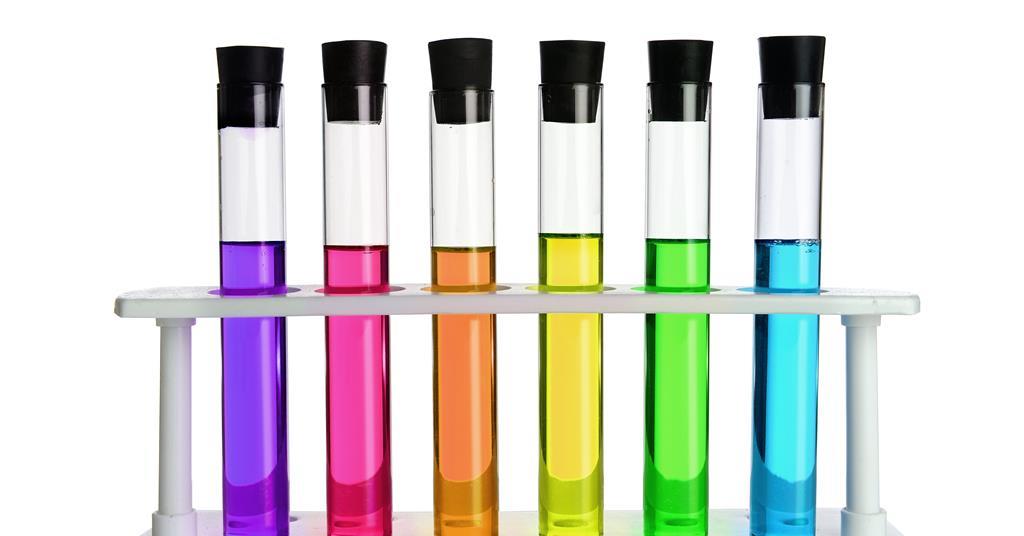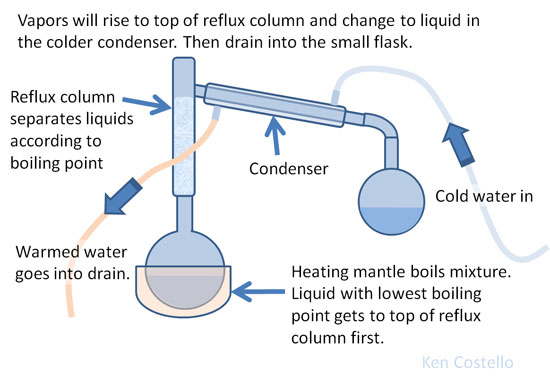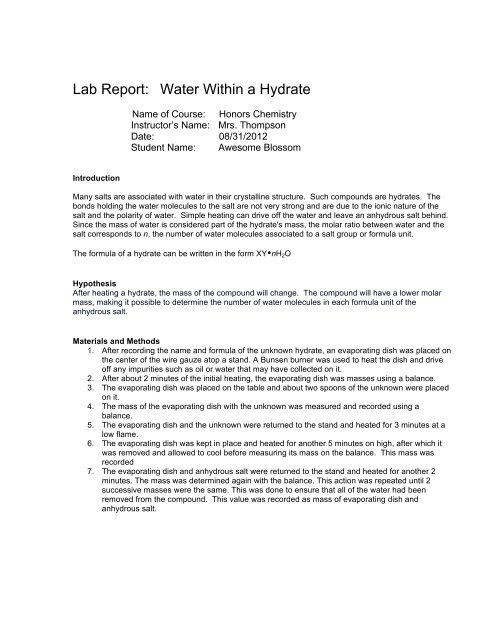An unknown salt lab is a common experimental setup in chemistry classrooms and labs. The goal of the lab is for students to identify an unknown salt by performing a series of tests and observations. These tests can include physical properties such as solubility and melting point, as well as chemical reactions with other compounds.
The unknown salt lab is a valuable learning experience for students because it allows them to practice the scientific method and problem-solving skills. By following a set of procedures and using their knowledge of chemistry, students must think critically and make observations to identify the unknown salt. This process helps students understand how chemists identify and characterize substances in the real world.
To begin the lab, students are given an unknown salt and a set of known compounds to use for comparison. They should start by performing physical tests on the unknown salt, such as measuring its solubility in various solvents and determining its melting point. These physical properties can provide clues about the identity of the salt.
Next, students can perform chemical tests on the unknown salt by reacting it with other compounds and observing the results. For example, they could add a drop of the salt solution to a flame and observe the color of the flame. Different salts produce different flame colors, which can help narrow down the possibilities.
Another chemical test that students can perform is a precipitation reaction, in which they add a known compound to the unknown salt solution and observe whether a solid precipitate forms. The presence or absence of a precipitate, as well as the color and shape of the precipitate, can give further clues about the identity of the salt.
Once students have gathered all of their observations and data, they can use this information to narrow down the possible identities of the unknown salt. They should then be able to make a hypothesis about the identity of the salt and use their knowledge of chemistry to support their hypothesis.
Overall, the unknown salt lab is a fun and educational way for students to practice their chemistry skills and apply the scientific method. It helps students understand how chemists identify and characterize unknown substances and encourages them to think critically and solve problems.







